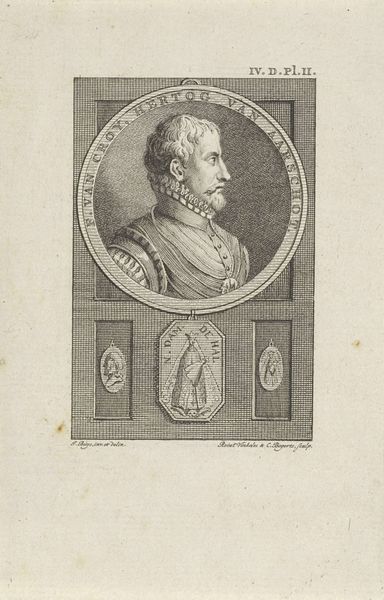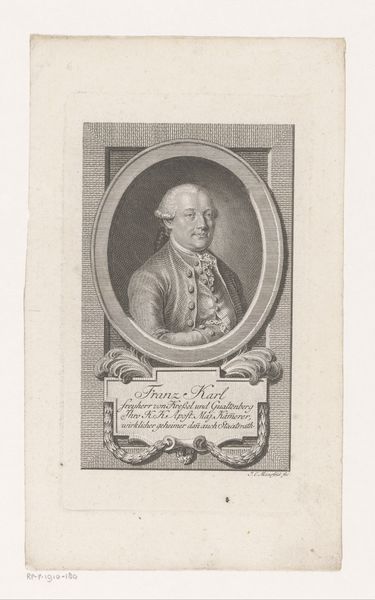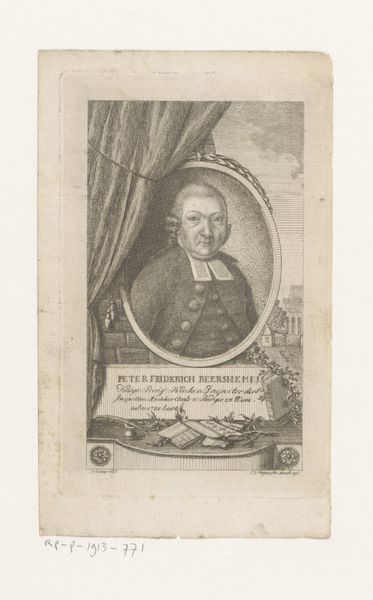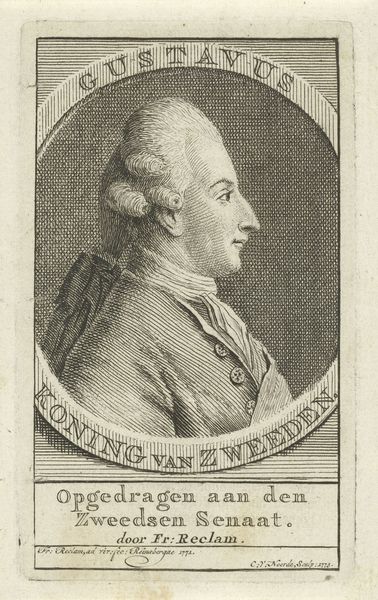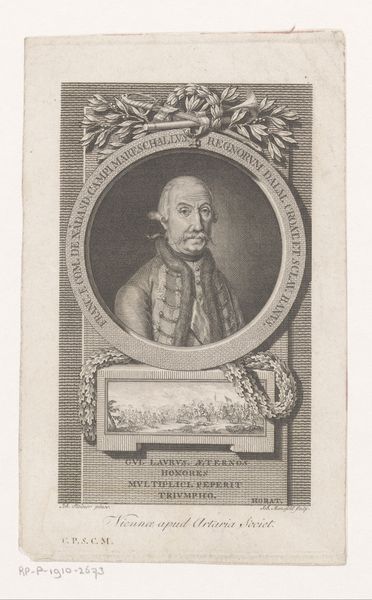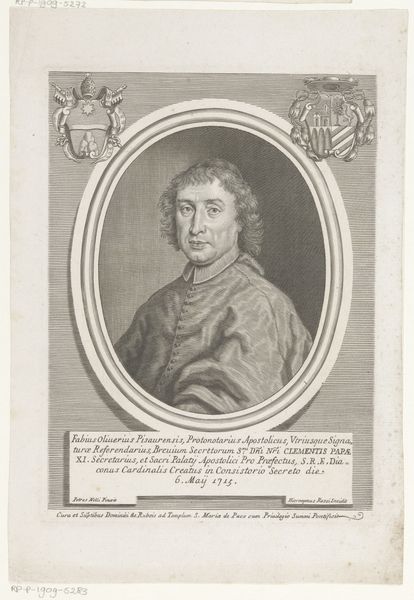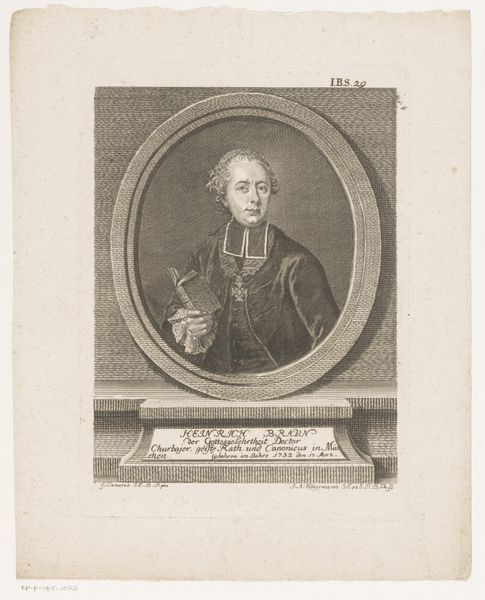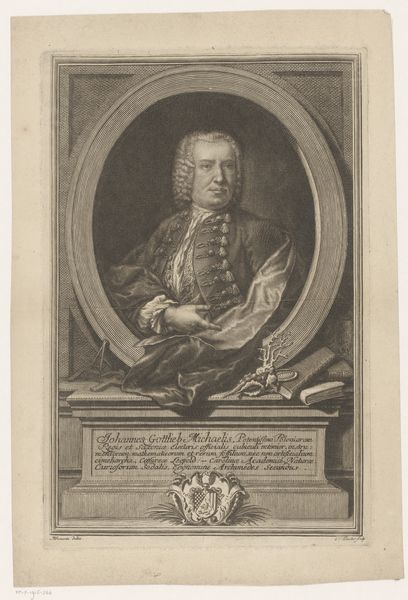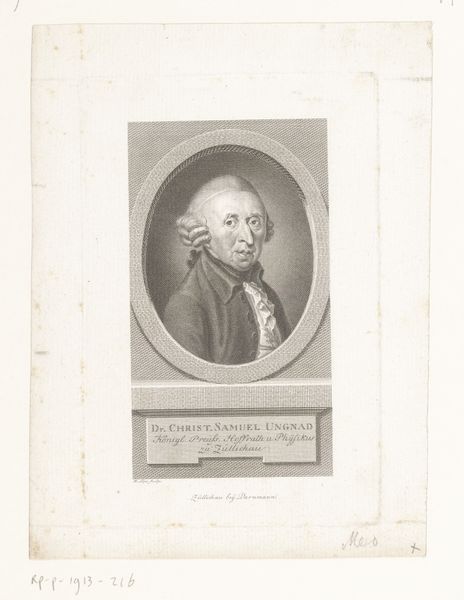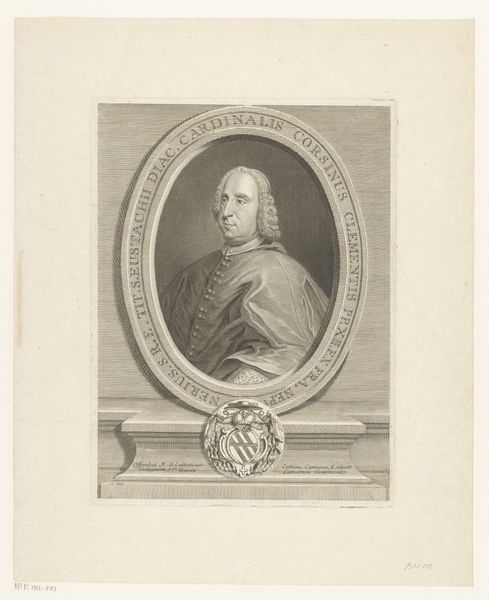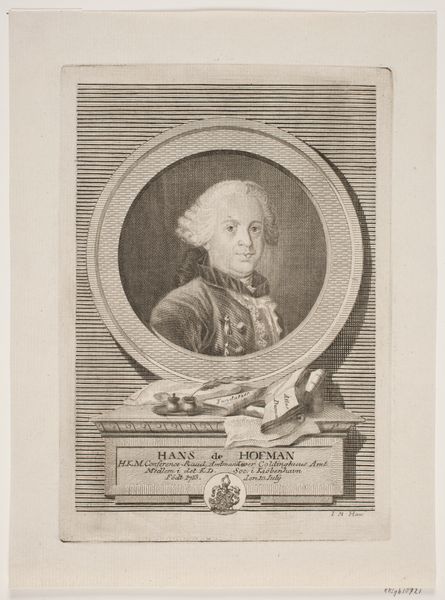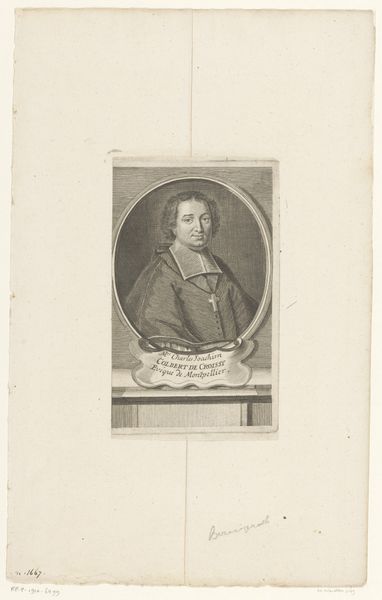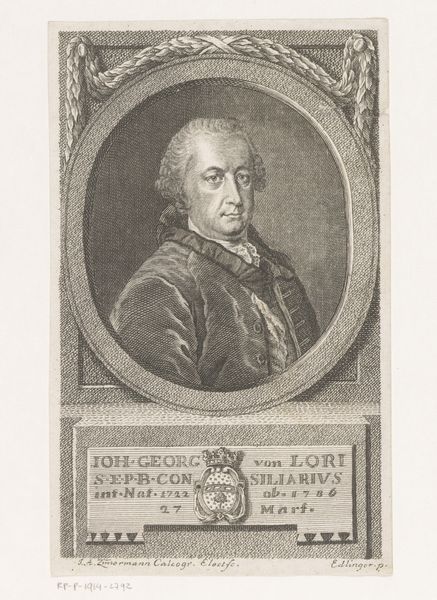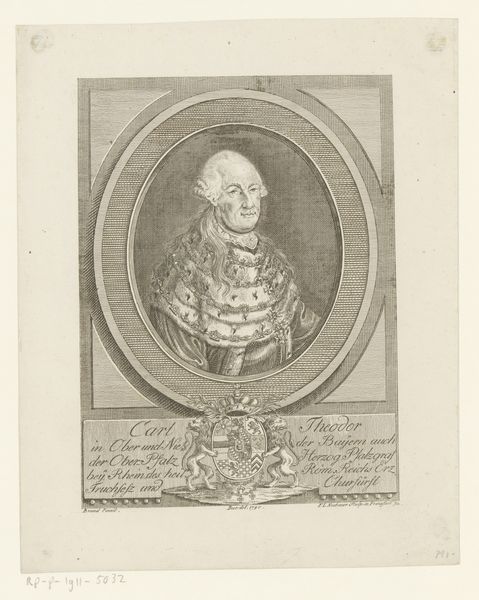
engraving
portrait
baroque
engraving
Dimensions: height 114 mm, width 52 mm
Copyright: Rijks Museum: Open Domain
This is Pierre Dupin’s print of Claude Adrien Helvétius, made sometime before 1751, the year of the artist’s death. The image was created using engraving, a process involving carving lines into a metal plate, inking it, and then pressing it onto paper. This technique allows for the creation of multiple identical images, making art more accessible. The material quality of the print—its crisp lines and tonal gradations—results directly from the skilled labor involved. Consider the number of decisions the engraver made in the creation of this portrait, each line a result of careful planning. In contrast to painting, engraving demanded precision, discipline, and a collaborative spirit. It was a process rooted in the world of commerce and wider consumption. Therefore, this print embodies a shift towards the democratization of art, where reproducibility and accessibility challenge traditional notions of artistic value. It reminds us to consider not only the image itself, but the means of its production, its cultural significance, and the labor that brought it into being.
Comments
No comments
Be the first to comment and join the conversation on the ultimate creative platform.
